Resting State FMRI
> research > Resting State FMRI

Resting state functional MRI is a relatively new and powerful method for evaluating regional interactions that arise when a subject is not performing an explicit task. Low frequency (<0.1 Hz) BOLD fluctuations often show strong correlations at rest even in distant gray matter regions. Fluctuations in spontaneous neural activity are assumed to underline the BOLD fluctuations, though the exact mechanisms giving rise to the neural fluctuations remain unclear.
The spatial patterns of R-fMRI correlations are stable, in that they are similar across multiple вАШrestingвАЩ states, such as eyes-open, eyes-closed, and fixation and across individuals and sessions. Several methods have been proposed to acquire and analyze resting state fMRI data. A major goal of laboratory is to find optimal combinations of methods to brain regions and understand relationships between them.
This entails optimization of many aspect of data acquisition (scan duration, spatial resolution, spatial smoothing during pre-processing) and data analysis (seed-based approaches and independent component analysis approaches).
1. Seed based Analysis
Seed-based analysis is the most commonly used method for observing the network and connectivity of the brain. In fMRI studies, signal of particular voxel or cluster, known as a seed or ROI, is used to compute correlations with other voxels. This provides a much more accurate and detailed observation of the specific connection of the brain area of interest. Applications of seed-based analysis to characterize dormant networks include partial correlation, coherence and partial coherence, phase relationships, clustering, and graph theory.


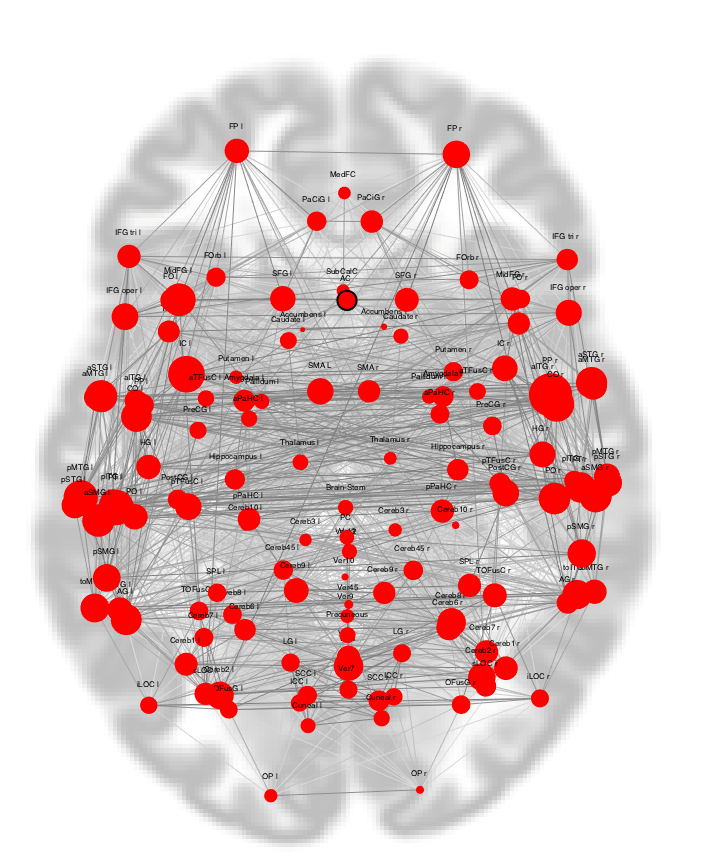

2. Independent Component Analysis (ICA)
Independent component analysis attempts to decompose multivariate signals into independent signals. For example, a sound is usually a numeric signal whenever there are signals from multiple sources. Then the question is whether you can separate these contributing sources from the overall observed signal. If the statistical independence assumption is true, blind ICA separation of the mixed signal gives very good results. The important thing to consider is that if you have the source, you need at least observation to recover the original signal in fMRI analysis.
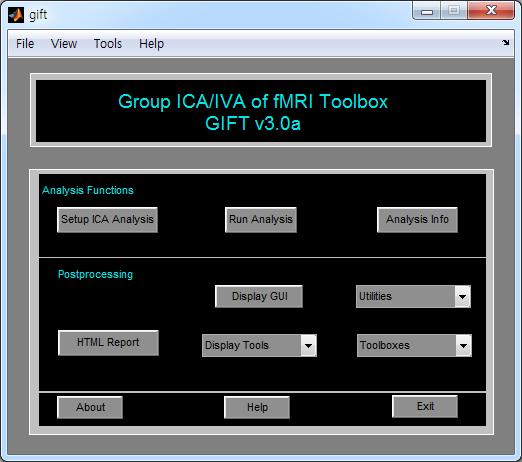
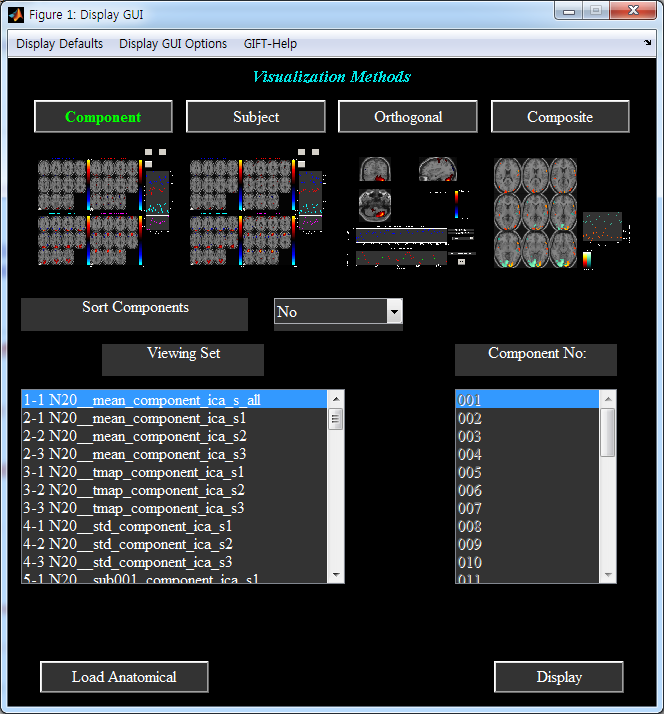
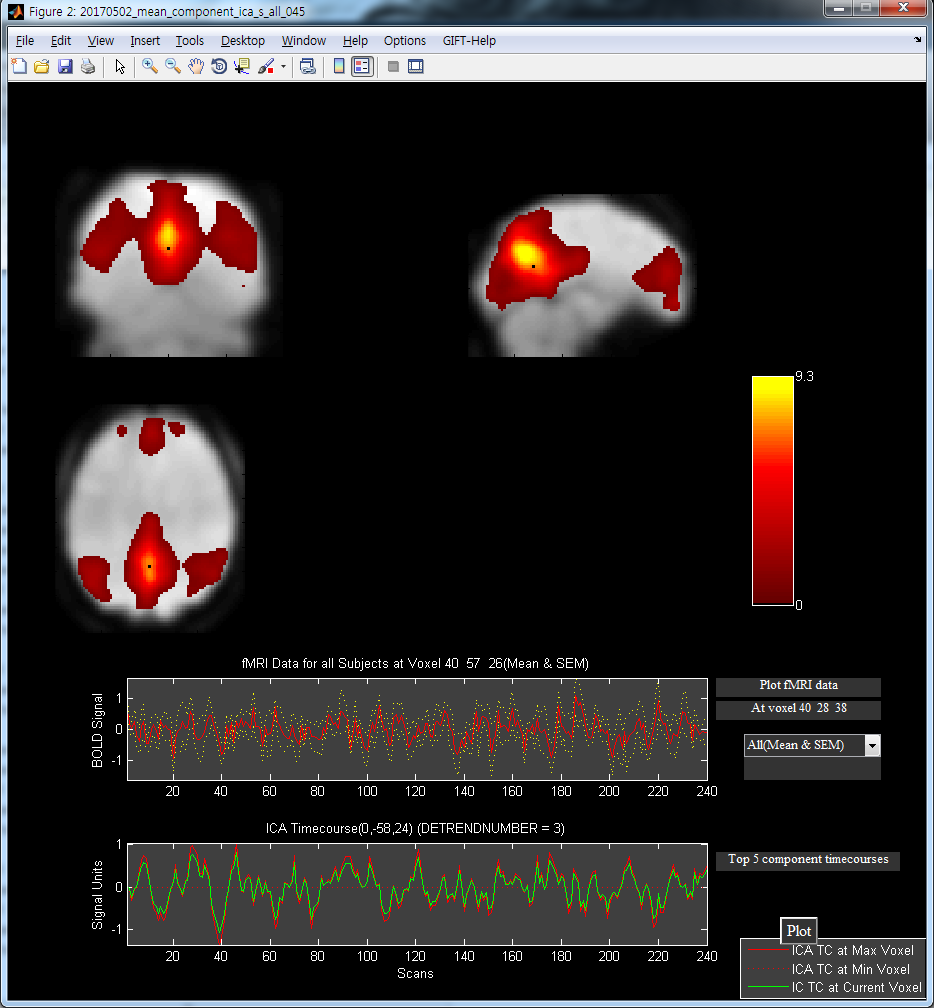
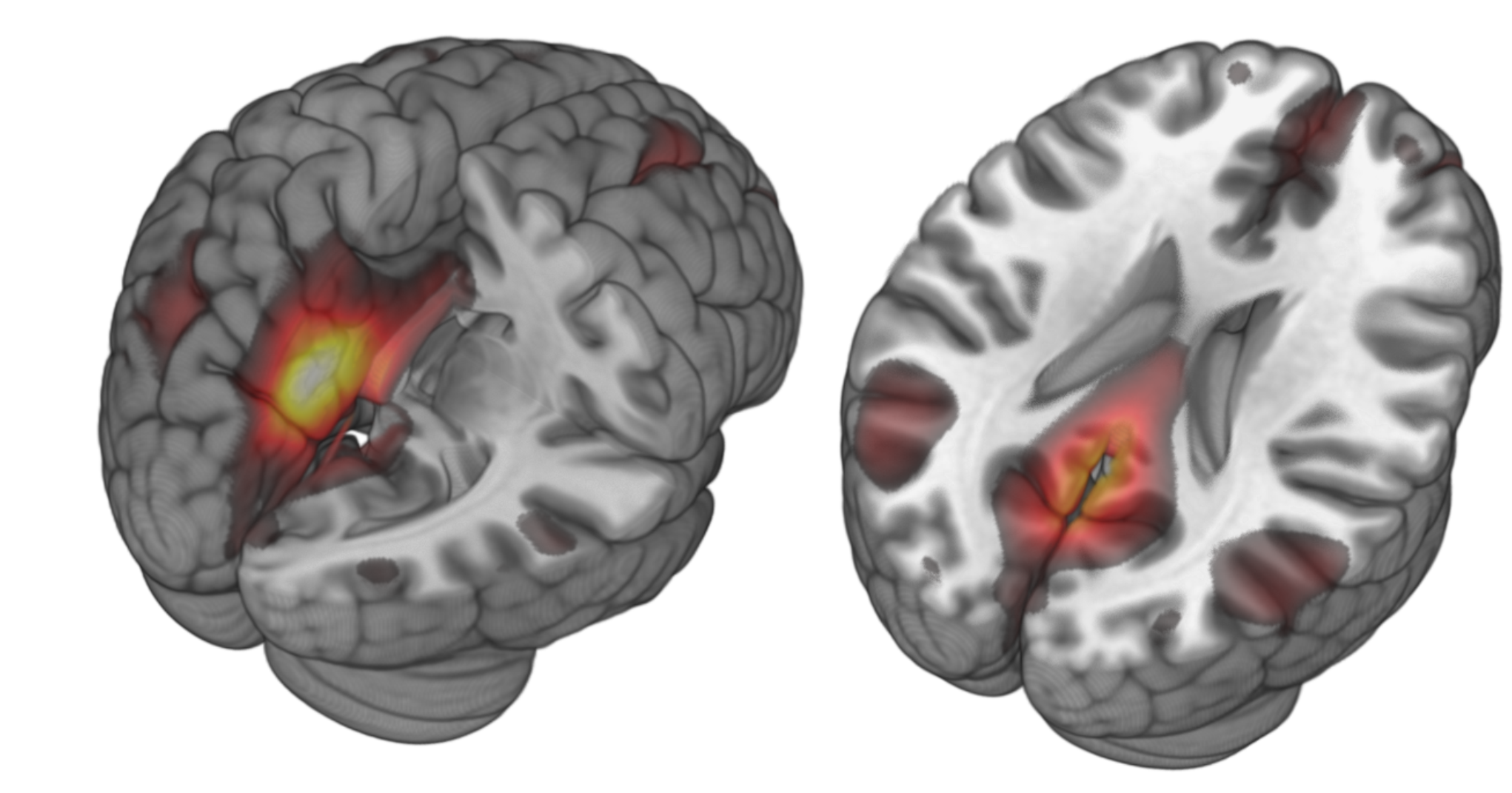
3. Power Spectral Density (PSD)
Power spectrum of the time series represents power distribution of the frequency components that make up the signal. According to Fourier analysis, physical signals can be decomposed into frequencies on several discrete frequencies or continuous frequency ranges. The statistical mean of a particular signal including noise analyzed as a frequency component called a spectrum. Any Signals that can be represented by time varying amplitudes have corresponding frequency spectra. This includes familiar elements such as visible light, music sound, radio, TV and even regular rotation of the Earth. When looking at these signals in the form of a frequency spectrum, certain aspects of the received signals or the underlying processes producing them are revealed.
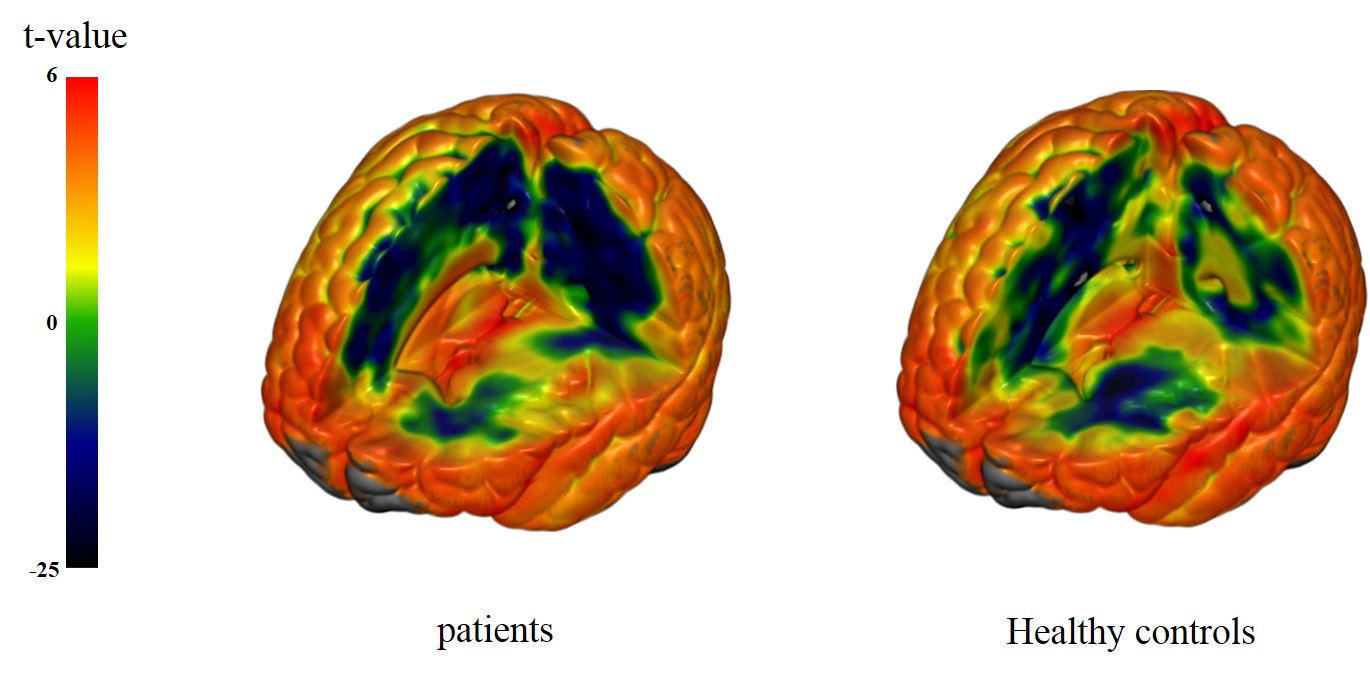

Resting state functional MRIлКФ нФЉнЧШмЮРк∞А нКєм†Х Taskл•Љ мИШнЦЙнХШмІА мХКмЭД лХМ мЭЉмЦілВШлКФ лЗМмЭШ мШБмЧ≠л≥Д мГБнШЄмЮСмЪ©мЭД нПЙк∞АнХШлКФ лН∞ мВђмЪ©лРШлКФ лєДкµРм†Б мГИл°≠к≥† к∞Х놕нХЬ лґДмДЭ л∞©л≤ХмЮЕлЛИлЛ§.
лВЃмЭА м£ЉнММмИШ мШБмЧ≠лМАмЭШ BOLD мЛ†нШЄк∞А Gray matterмЭШ мЭЉлґА мШБмЧ≠лУ§ к∞ДмЧР лЖТмЭА мГБкіАмД±мЭД к∞АмІАк≥† мІДлПЩнХШл©∞, мЛ†к≤љнХЩм†Б мЛ†нШЄмЩА мЭілЯђнХЬ лВЃмЭА м£ЉнММмИШ мШБмЧ≠лМАмЭШ мЛ†нШЄк∞А м†ХнЩХнЮИ мЦілЦ§ л©Фмї§лЛИм¶ШмЬЉл°Ь л∞ЬмГЭнХШлКФмІАмЧР лМАнХімДЬлКФ мЧђм†ДнЮИ л™ЕнЩХнХШмІАлКФ мХКмКµлЛИлЛ§.
1. Seed based Analysis
seed-based лґДмДЭмЭА лЗМмЭШ лД§нКЄмЫМнБђмЩА мЧ∞к≤∞мД±мЭД кіАм∞∞нХШлКФ лН∞ к∞АмЮ• мЭЉл∞Шм†БмЬЉл°Ь мВђмЪ©лРШлКФ л∞©л≤ХмЮЕлЛИлЛ§. fMRI мЧ∞кµђмЧРмДЬ мЪ∞л¶ђк∞А мЫРнХШлКФ нКєм†Х л≥µмЕА(voxel) лШРлКФ нБілЯђмК§нД∞(cluster)мЭШ мЛ†нШЄмЩА лЛ§л•Є л≥µмЕАк≥ЉмЭШ мГБкіА кіАк≥Дл•Љ к≥ДмВ∞нХШкЄ∞ мЬДнХШмЧђ мВђмЪ©лРШл©∞, нКєнЮИ лЗМмЭШ нКєм†Х мШБмЧ≠мЧР лМАнХШмЧђ лЛ§л•Є мЬДмєШ лШРлКФ лД§нКЄмЫМнБђк∞Д лѓЄмєШлКФ мШБнЦ•мЭД лґДмДЭнХШлКФлН∞ мЬ†л¶ђнХ©лЛИлЛ§. seed-based лґДмДЭмЭШ мЭСмЪ©мЬЉл°ЬлКФ лґАлґД мГБкіА кіАк≥Д(partial correlation), мЭЉкіАмД±(coherence), мЬДмГБ кіАк≥Д(phase relationships), нБілЯђмК§нД∞лІБ(clustering) л∞П кЈЄлЮШнФД мЭіл°†(graph theory)мЭі мЮИмКµлЛИлЛ§.



2. Independent Component Analysis (ICA)
лПЕл¶љмД±лґДлґДмДЭ(Independent component analysis)мЭА лЛ§л≥АлЯЙ мЛ†нШЄл•Љ лПЕл¶љ мЛ†нШЄл°Ь лґДнХінХШлКФ л∞©л≤ХмЮЕлЛИлЛ§. мШИл•Љ лУ§л©і мЪ∞л¶ђк∞А лУ£лКФ лЕЄлЮШлКФ мЧђлЯђ мЭМмЫРмЭі мДЮмЧђ лІМлУ§мЦімІД нШЉнХ©мЫРмЮЕлЛИлЛ§. лПЕл¶љмД±лґДлґДмДЭмЭА кЈЄ нШЉнХ©мЫРмЬЉл°ЬлґАнД∞ к∞Бк∞БмЭШ мЭМмЫРмЭД лґДл¶ђнХШлКФлН∞ лІМмХљ нЖµк≥Дм†Б лПЕл¶љмЭі к∞Ам†ХлРЬлЛ§л©і нШЉнХ© мЛ†нШЄмЭШ к∞Бк∞БмЭШ лПЕл¶љмД±лґД мґФмґЬмЭА лІ§мЪ∞ лЖТмЭА мЛ†лҐ∞лПДмЭШ к≤∞к≥Љл•Љ мЦїмЭД мИШ мЮИмКµлЛИлЛ§. кЈЄлЯђлВШ к≥†л†§нХімХЉ нХ† м§СмЪФнХЬ к≤ГмЭА лПЕл¶љмД±лґДлґДмДЭмЭі мЬ†мЭШнХШк≤М мЮСмЪ©нХШкЄ∞ мЬДнХШмЧђ нЖµк≥Дм†БмЬЉл°Ь мµЬмЖМнХЬмЭШ мЫР мЛ†нШЄмЭШ мГШнФМмЭШ к∞ЬмИШк∞А мЪФкµђлР©лЛИлЛ§.




3. Power Spectral Density (PSD)
мЛЬк∞ДмЧР лФ∞л•Є м†Д놕лґДнПђ(power spectrum)мЭА м£ЉнММмИШмЧР лФ∞л•Є мЛ†нШЄмЭШ кµђмД±мД±лґДмЭШ лґДнПђл°Ь лВШнГАлВЉ мИШ мЮИмКµлЛИлЛ§. нУ®л¶ђмЧР лґДмДЭмЭД нЖµнХШмЧђ лђЉл¶ђм†БмЭЄ мЛ†нШЄлКФ мЧђлЯђк∞ЬмЭШ к∞Ьл≥Д м£ЉнММмИШ лШРлКФ мЧ∞мЖН м£ЉнММмИШл°Ь лВШлЙШмЦі мІИмИШ мЮИмЬЉл©∞ мЮ°мЭМмЭД нПђнХ®нХЬ м£ЉнММмИШ мД±лґДмЭШ нЖµк≥Дм†Б нПЙкЈ†мЭД м†Д놕 лґДнПђлЭЉк≥† нХ† мИШ мЮИмКµлЛИлЛ§. мЛЬк∞ДмЧР лФ∞лЭЉ мДЄкЄ∞мЭШ л≥АлЯЙмЭД к∞АмІАлКФ л™®лУ† мЛ†нШЄлКФ лґДнПђл•Љ к∞АмІИ мИШ мЮИлКФлН∞, мЪ∞л¶ђк∞А мЭµмИЩнХЬ к∞АмЛЬкіСмД†, лЕЄлЮШ мЖМл¶ђ, лЭЉлФФмШ§, TV, мЛђмІАмЦі мІАкµђмЭШ к≥µм†ДкєМмІАлПД лґДнПђлПДл•Љ к∞АмІИ мИШ мЮИмКµлЛИлЛ§. м£ЉнММмИШ лЛ®мЬДл°Ь мЭілЯђнХЬ мЛ†нШЄлУ§мЭД л≥Љ лХМ мЭім†ДмЧРлКФ мЭЄмІАнХШмІА л™їнЦИлНШ мЛ†нШЄлУ§мЭШ нКєм†Х мЄ°л©ілУ§мЭД л∞Ьк≤ђ нХ† мИШ мЮИлКФ лґДмДЭл≤ХмЮЕлЛИлЛ§.

601, 515-3, Hakjeong-dong, Buk-gu, Daegu 702-911, Republic of KOREA | Tel : +82-53-950-4128, 4129 | e-mail : ychang@knu.ac.kr
Copyright(c) 2016 Kyungpook National University School of Medicine BMR lab. All rights reserved.


